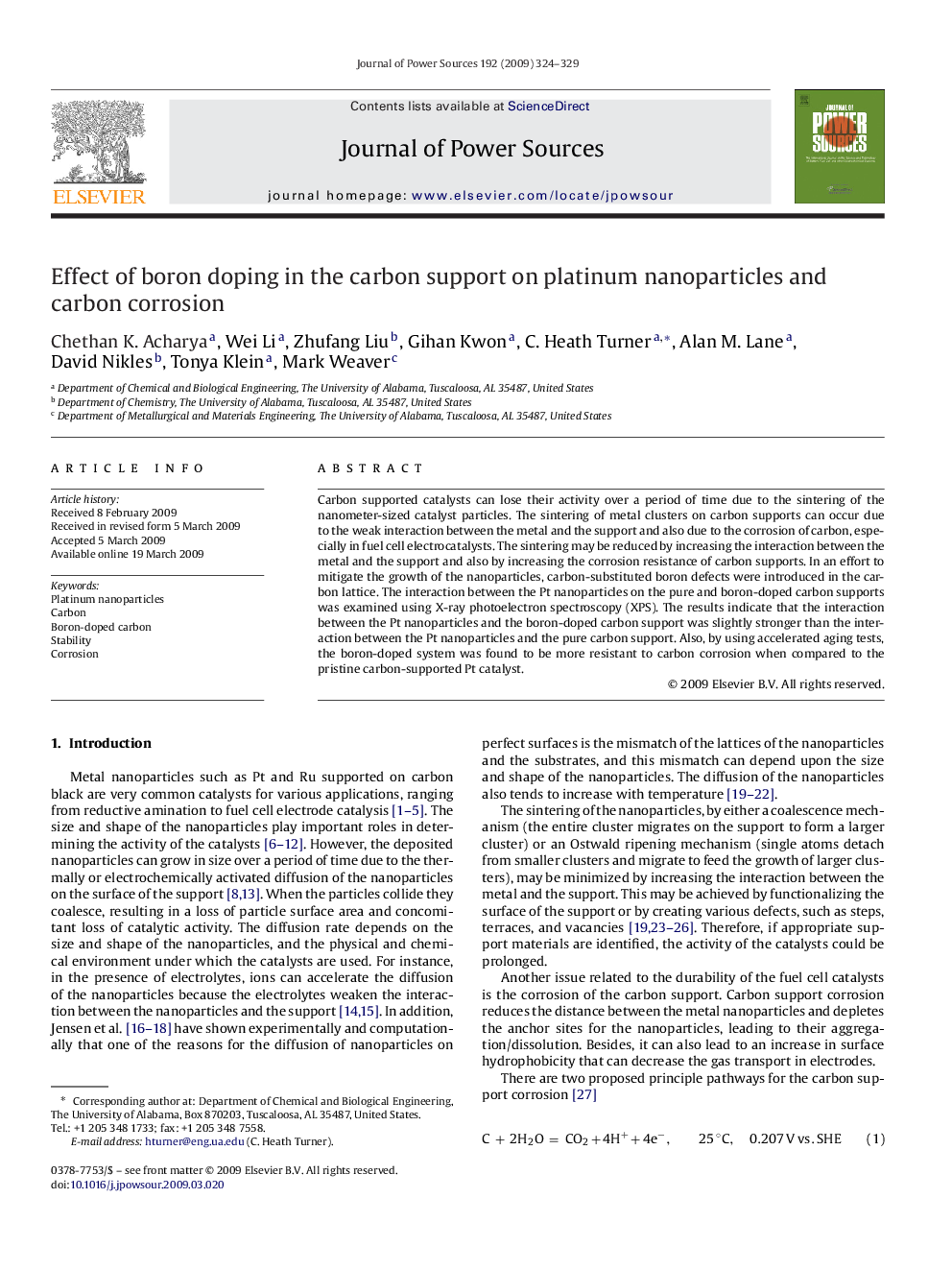| Article ID | Journal | Published Year | Pages | File Type |
|---|---|---|---|---|
| 1294107 | Journal of Power Sources | 2009 | 6 Pages |
Carbon supported catalysts can lose their activity over a period of time due to the sintering of the nanometer-sized catalyst particles. The sintering of metal clusters on carbon supports can occur due to the weak interaction between the metal and the support and also due to the corrosion of carbon, especially in fuel cell electrocatalysts. The sintering may be reduced by increasing the interaction between the metal and the support and also by increasing the corrosion resistance of carbon supports. In an effort to mitigate the growth of the nanoparticles, carbon-substituted boron defects were introduced in the carbon lattice. The interaction between the Pt nanoparticles on the pure and boron-doped carbon supports was examined using X-ray photoelectron spectroscopy (XPS). The results indicate that the interaction between the Pt nanoparticles and the boron-doped carbon support was slightly stronger than the interaction between the Pt nanoparticles and the pure carbon support. Also, by using accelerated aging tests, the boron-doped system was found to be more resistant to carbon corrosion when compared to the pristine carbon-supported Pt catalyst.
